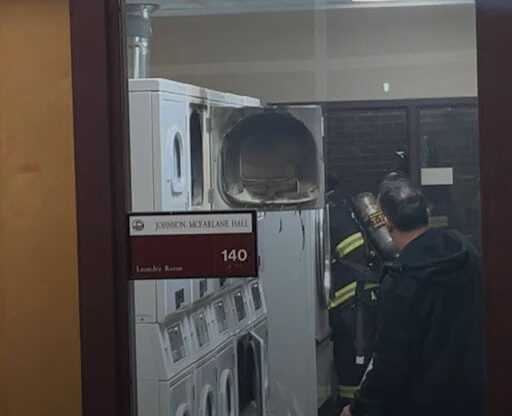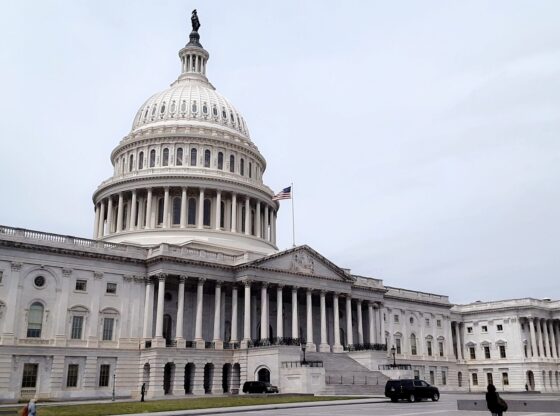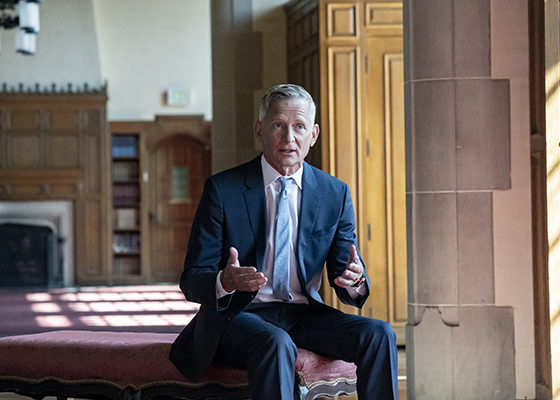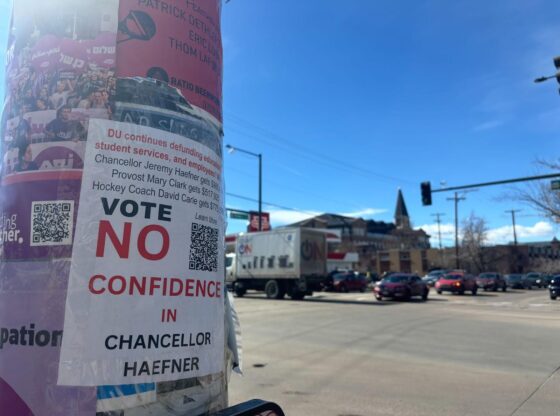As I approach my final few days of college, nostalgia for my early days at the Clarion has begun to make a permanent home in my mind amongst other scattered worries about job applications and apartment leases. A timid but eager journalism major, I joined the newspaper my freshman year as a contributing writer during the height of the pandemic. Pitch meetings were on Zoom, and I hadn’t actually met any of the editors who diligently corrected my articles each week.
Four years, three editing positions and multiple print editions of the paper later, the days of writing opinion pieces from my isolated dorm room seem an entire lifetime ago. I had no idea just how paramount this organization would become to my professional development as a writer and my personal development as a student at DU.
When Editor-in-Chief Aubrey Cox and I assumed our leadership positions nearly a year ago, we shared a common goal for the paper: return to print. We understood it to be a fairly lofty goal, as we both had just gone through three years of schooling that had largely reinforced the same platitude over and over again: “print journalism is dying.”
As pretentious (and perhaps slightly delusional) as it sounds, I truly believe print journalism is a lost art form. In a now mostly-digital landscape that can put out an endless stream of content, there is something to be said for the value of strict word counts and page limits. There is a disciplined intentionality in creating a twelve-page newspaper. In other words, we only have a certain amount of space to get across the necessary information. That information therefore has to be succinct, engaging and well worth the space it takes up.
Apart from a replicated masthead from a 1960s edition of the Clarion, we rebuilt the print issue from the ground up, fonts and all. It was no easy task, one filled with countless meetings between Aubrey and I to discuss everything from section headers to our enthusiasm for having a crossword on the back page, many late Monday nights spent with the copyediting staff and a down-to-the-wire scramble to get our first edition sent to the printer on time.
Although I was beyond thrilled to hold a copy of the newspaper in my hands for the first time last fall, I had purposefully set my expectations low for receiving any sort of response from the DU community. For that reason, I am so incredibly grateful for the overwhelmingly positive feedback we have gotten from students, faculty and staff alike.
I’d like to sincerely thank our wonderful staff of editors and writers—especially Annabelle Kiely, Ana Júlia Rodrigues Alves, Alyssa Avila, Anna Neumann, Riley Laub, Mason Wageman, Avery Young and Jackie Michel—without whom the feat of reinstating the print edition of the paper would not have been possible. Your excitement, hard work and long nights have not gone unnoticed and are deeply appreciated.
Most importantly, I cannot commend my partner-in-print and dear friend Aubrey Cox enough on his compassionate leadership and drive for student journalism in his role as Editor-in-Chief this year. I am ever-impressed by your genuine passion for writing and know you will go on to do great things.
To my successor Riley Laub, I am so appreciative of your unwavering commitment to the growth of the Clarion and to print journalism as a whole, and I cannot wait to see you flourish in your new role. You and Ana Júlia, the Clarion’s new endlessly eloquent Editor-in-Chief, will make a fantastic team. I know we are leaving the paper in more than capable hands.
And to the future writers and editors of the Clarion: Thank you for keeping student journalism alive. Tight budgets, public backlash and endless deadlines are all an unavoidable part of the job, and the impact you make is not always immediately overt. But the impact is there—I promise. The work you do is vital to keeping dialogues open and student voices heard, and it must be continued.











